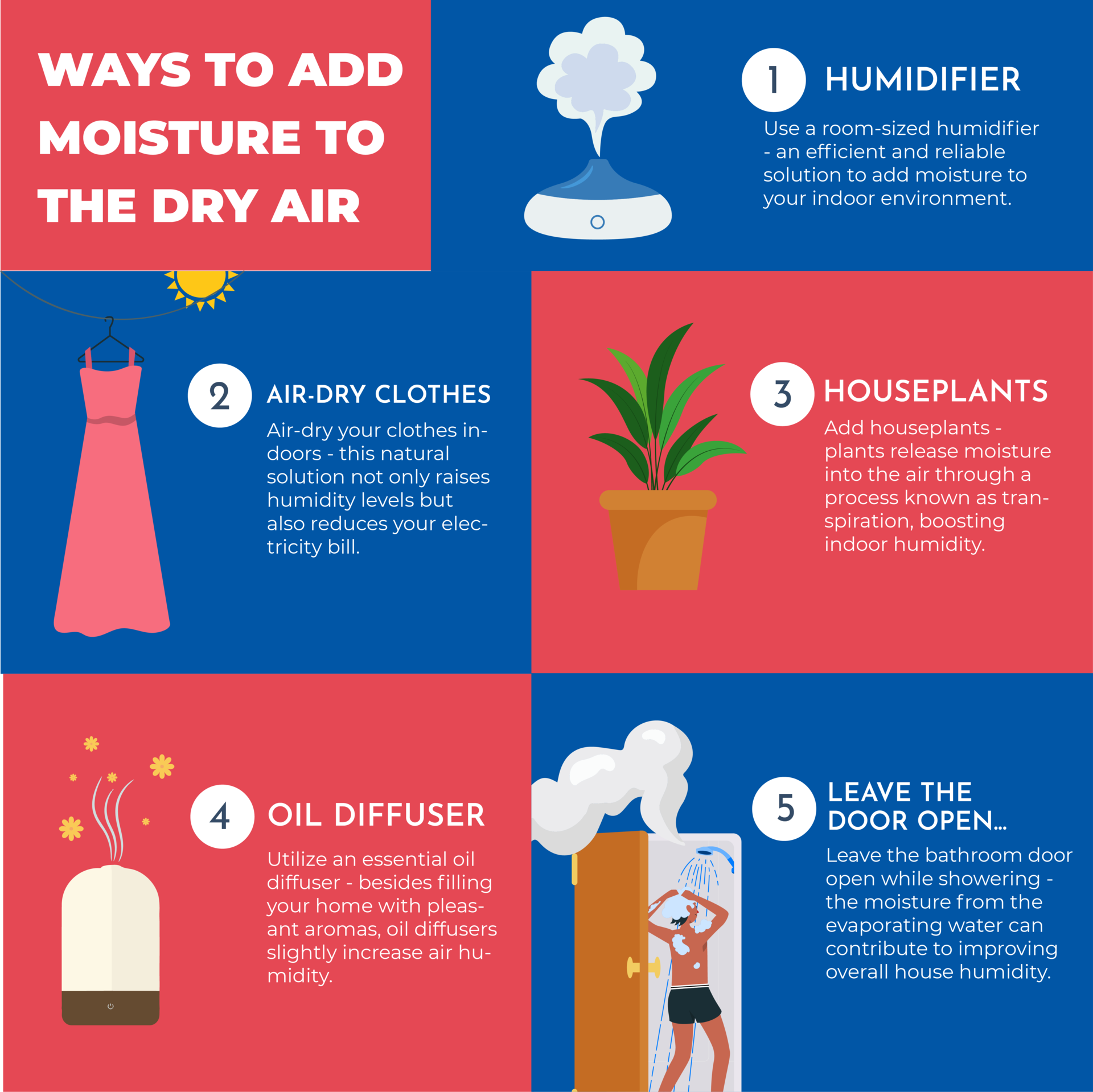Utilizing Humidifiers
Employ a Humidifier: This is often the most direct and controllable method. Options include central humidifiers integrated with your HVAC system, or portable console and tabletop units. Choose between cool-mist (ultrasonic or evaporative) and warm-mist (steam vaporizer) varieties based on preference and safety considerations (e.g., around children). Regular cleaning according to manufacturer instructions is crucial to prevent mold and bacteria growth.
Monitor Humidity Levels: Use a hygrometer to accurately measure indoor relative humidity. The ideal range for comfort and health is generally between 30% and 50%. Consistently low humidity (below 30%) can lead to dry skin, irritated sinuses, and damage to wooden furniture. Conversely, high humidity (above 50-60%) can promote mold growth and dust mite proliferation.
Natural and Everyday Methods to Increase Humidity
- Strategic Water Evaporation: Place bowls of water in various rooms, especially near heat sources like radiators or in sunny spots. The warmth will accelerate evaporation, adding moisture to the air. Replenish water as it evaporates.
- Leverage Steam from Daily Activities:
- When cooking, allow steam to escape by not covering pots and pans completely (when safe and appropriate for the cooking process).
- After showering or bathing, leave the bathroom door ajar (if privacy allows and you don't have an exhaust fan running) to let the moist, warm air circulate into adjoining areas.
- Air-Dry Laundry Indoors: Instead of using a clothes dryer, hang wet laundry on an indoor drying rack or line. As the clothes dry, they release significant moisture into the surrounding air. Ensure adequate air circulation to prevent mustiness.
- Introduce Houseplants: Plants release water vapor through a process called transpiration. Grouping several plants can create a more humid microenvironment. Species like spider plants, peace lilies, and ferns are good choices.
- Use Damp Towels: Hang damp (not soaking wet) towels over radiators or near air vents. The heat or airflow will help evaporate the water, humidifying the air.
Other Considerations
Reduce Dehumidifying Influences: Minimize the use of kitchen and bathroom exhaust fans unless necessary for removing strong odors or excessive steam, as they vent moisture-laden air outside.

Seal Air Leaks: Improve your home's insulation and seal drafts around windows and doors. This helps retain the humidified air indoors, making your efforts more effective, especially during colder, drier months. However, ensure your home still has adequate ventilation to prevent condensation and maintain good air quality.










